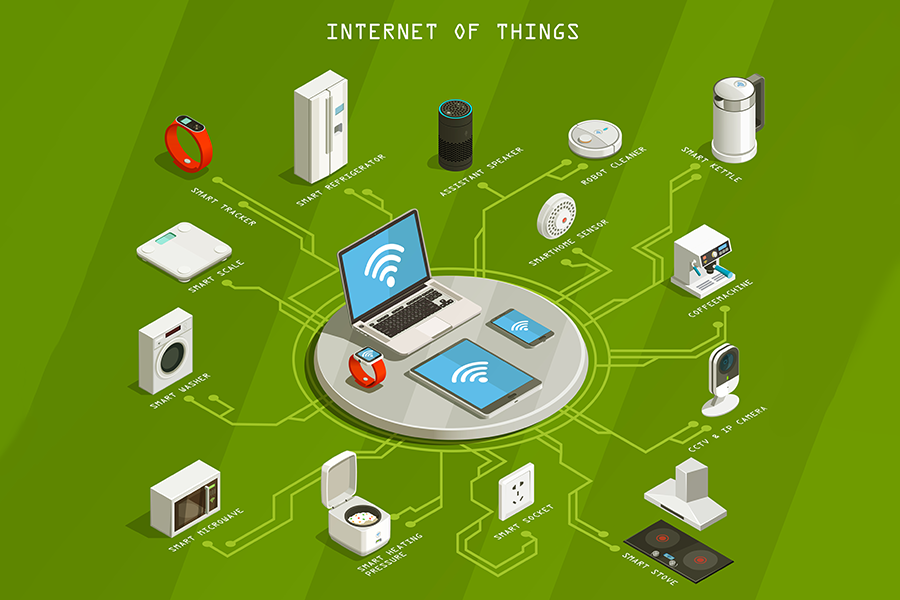
The logistics industry is undergoing a profound transformation, driven by technological advancements that promise to enhance efficiency, accuracy, and overall performance. Among these innovations, the Internet of Things (IoT) stands out as a game-changer, particularly in the realm of inventory monitoring. Distribution centers, the hubs of the supply chain, are leveraging IoT sensors to streamline operations, reduce costs, and improve service levels. This blog explores how IoT sensors are revolutionizing inventory monitoring in distribution centers.
Real-Time Inventory Visibility: The New Standard
One of the most significant impacts of IoT sensors is the ability to provide real-time visibility into inventory levels. Unlike traditional methods, which often involve manual counts and periodic audits, IoT sensors offer continuous monitoring of stock. These sensors, attached to goods or storage locations, send real-time data to centralized systems, allowing warehouse managers to see up-to-the-minute inventory statuses. This visibility ensures that stock levels are always accurate, reducing the chances of stockouts and overstock situations.
Precision and Accuracy: Minimizing Human Error
Human error is a common issue in inventory management, often leading to discrepancies that can disrupt operations. IoT sensors drastically reduce the potential for such errors. By automating data collection and reporting, these sensors ensure that inventory records are precise and up-to-date. This accuracy is crucial for maintaining optimal inventory levels and ensuring that the right products are available at the right time.
Enhancing Operational Efficiency
The integration of IoT sensors into inventory monitoring systems brings about significant improvements in operational efficiency. Automated inventory tracking eliminates the need for time-consuming manual checks, allowing staff to focus on more value-added activities. For example, IoT sensors can trigger automated alerts for low stock levels, prompting timely reordering and reducing the risk of stockouts. Additionally, the data generated by IoT sensors can be used to optimize warehouse layout and streamline picking and packing processes, further boosting efficiency.
Environmental Monitoring: Protecting Sensitive Goods
IoT sensors are not limited to tracking the quantity and location of inventory. They can also monitor environmental conditions such as temperature, humidity, and light levels. This capability is especially important for perishable goods, pharmaceuticals, and other sensitive items that require specific storage conditions. By continuously monitoring these parameters, IoT sensors help ensure that products are stored correctly, reducing waste and preventing spoilage.
Data-Driven Insights for Better Decision-Making
The wealth of data generated by IoT sensors opens up new possibilities for data-driven decision-making. Advanced analytics tools can process this data to uncover trends and patterns, providing valuable insights that can inform inventory management strategies. For instance, predictive analytics can help forecast demand more accurately, allowing distribution centers to adjust their inventory levels proactively. This proactive approach minimizes the risk of stockouts and excess inventory, leading to cost savings and improved customer satisfaction.
Integration with Advanced Technologies
IoT sensors work best when integrated with other advanced technologies such as warehouse management systems (WMS), enterprise resource planning (ERP) systems, and blockchain. This integration creates a seamless and interconnected ecosystem that enhances the overall efficiency and transparency of the supply chain. For example, combining IoT with blockchain technology can provide an immutable and transparent record of inventory movements, improving traceability and accountability.
Scalability and Adaptability
One of the key advantages of IoT sensor technology is its scalability and adaptability. Whether managing a small warehouse or a large distribution center, IoT solutions can be tailored to fit specific needs. This scalability allows businesses to start with a basic setup and expand as their operations grow, ensuring a cost-effective approach to inventory monitoring.
The Future of Inventory Monitoring
As IoT technology continues to evolve, we can expect even more sophisticated applications and integrations that will further enhance inventory monitoring in distribution centers. Future advancements may include more precise sensors, enhanced data analytics capabilities, and greater integration with other emerging technologies such as artificial intelligence (AI) and machine learning. These innovations will continue to drive improvements in efficiency, accuracy, and overall operational performance.
Conclusion
IoT sensors are at the forefront of a revolution in inventory monitoring, transforming how distribution centers operate. By providing real-time visibility, enhancing accuracy, improving efficiency, and enabling data-driven decision-making, these sensors are helping businesses stay competitive in an increasingly demanding market. As the technology advances, the benefits of IoT in inventory monitoring will only grow, making it an essential component of modern distribution center operations. Embracing IoT sensors is not just an upgrade; it’s a strategic move towards a more efficient, accurate, and responsive supply chain.
